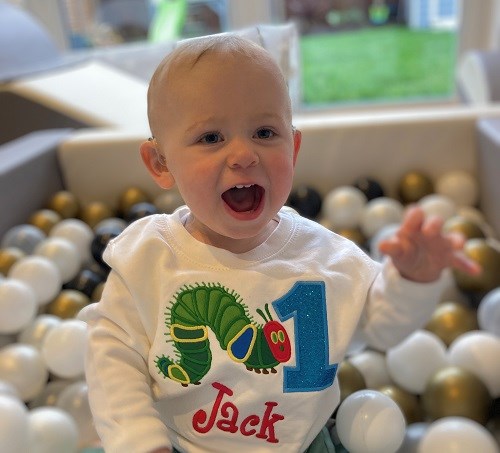To sign or not to sign
Published Date: 05 Jan 2023
To sign or not to sign? That is the question! It’s a question that seems to cause a lot of controversy amongst families affected by deafness. Some feel total communication is the way forward, others want to focus on verbal language only and others embrace being Deaf and sign. There’s no right or wrong decision as a parent. I can only share our own experience which I’ve found incredibly positive.
When our babies were diagnosed, we decided to learn British Sign Language (BSL) for a whole communication approach. This was for several reasons, but we wanted them to have the opportunity to communicate early on as babies, not knowing then how much benefit (if any) they’d receive from their future hearing devices. We attended The Signing Company classes and got a good grounding in BSL when Isabelle was young. Now that Isabelle is four, she doesn’t stop talking (!), but recently we’ve been on her younger brother Jack’s signing journey.
We began with a few basic signs such as ‘milk’, ‘mummy’, ‘daddy’ and ‘more’ – both signing and saying the words. We didn’t really use any other signs in the first few months as we wanted them to start making those connections and putting those funny hand movements in context. The first time Jack demonstrated his understanding is etched in my memory: as I signed ‘milk’ he beamed and let out an excited chuckle. This was around five or six months, and having just turned one, he still very much approves when that particular sign is bandied around!
Once Jack started responding to signing, I started to sign key words a lot more and introduce signs wherever we were: whilst cooking, reading stories and just day-to-day playing. This sometimes means only half a sign whilst holding a book or toy (or Jack!), but the benefit is still there.
One of our favourite books to sign is ‘Brown Bear, Brown Bear’ as it covers both animals and colours. We’ve been using wooden puzzles to introduce vehicles, encouraging Jack to move the puzzle piece in a similar way to the corresponding sign (for example, waving the aeroplane in the air). We use toy animals to encourage him to distinguish between two animal signs which he indicates with eye gaze or pointing. This will hopefully build up to him returning the sign.
And on that note, in the last month Jack has started signing back! After almost a year of what seemed like a one-sided conversation, it’s been lovely to see him confidently tell us he wants water or ‘more’ bubbles! Every few days he seems to have a new sign, and he clearly thrives on being able to communicate. I always intended to sign with my children even before knowing they were deaf. It has been an amazing tool for early communication in our family.
